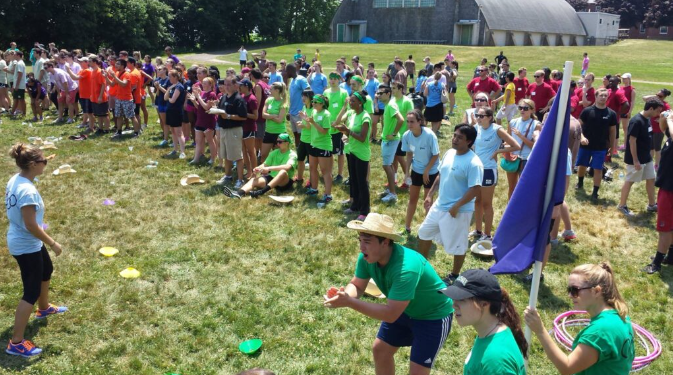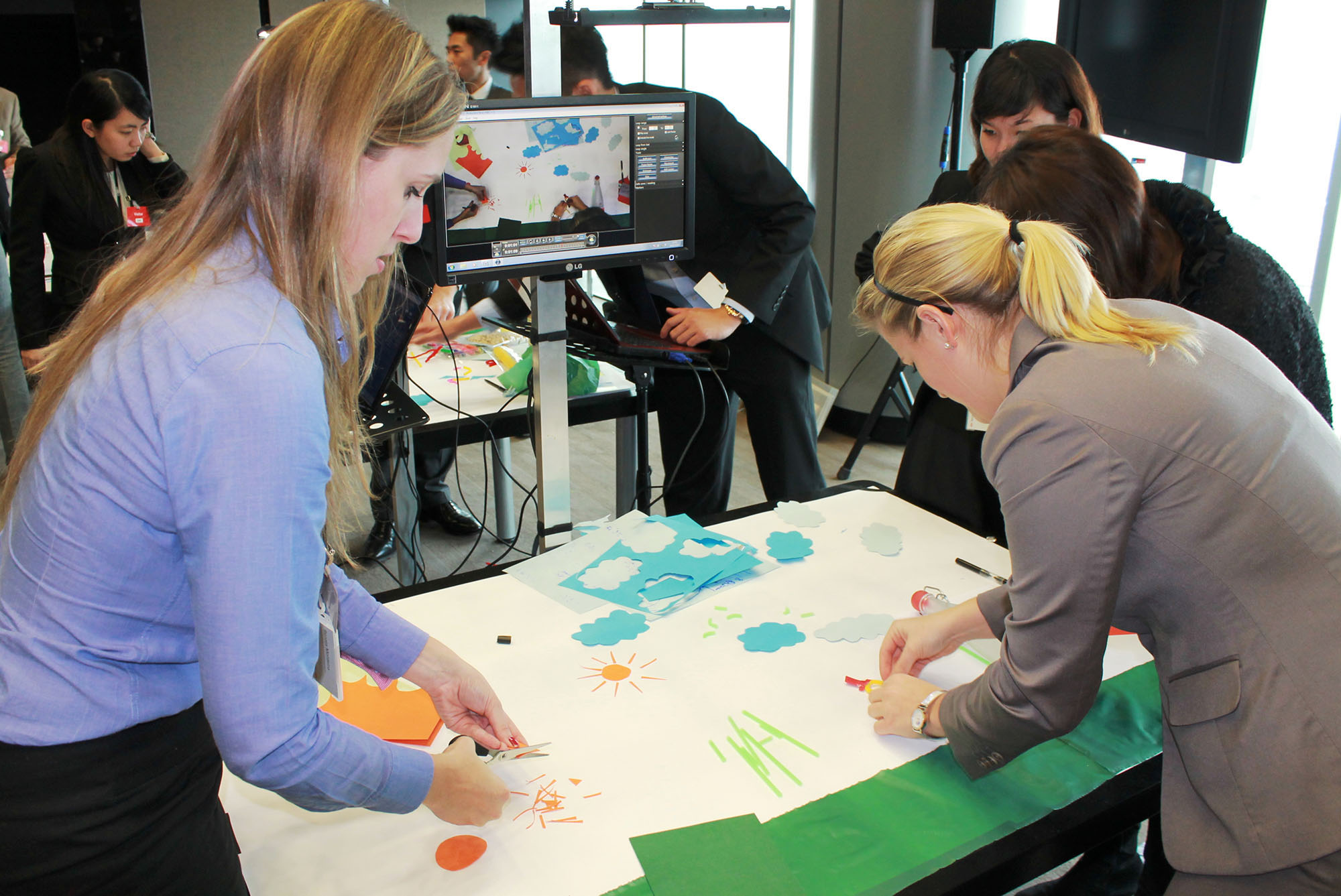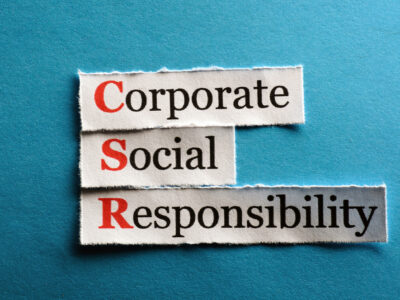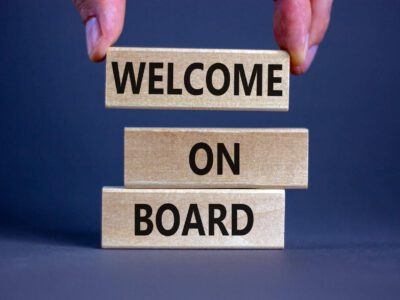Team communication and success are intrinsically linked. Effective communication keeps team members on the same page, improves teamwork, boosts productivity, and enables employees to perform at their full potential.
With remote and hybrid teams becoming the new standard, communication with team members has become more challenging in recent years. Now more than ever, leaders must prioritize effective communication and teamwork skills.
This guide explores how to strengthen teamwork and communication. We’ll also highlight expert tips proven to bring teams together and improve company culture.
Signs of Poor Communication at Work
Is your team communicating daily through messaging channels like Slack, Teams, and Google Chat? Great!
That doesn’t mean you’re in the clear, though. Your workplace may still be struggling with poor team communication.
Active communication doesn’t always equal effective team communication. Team members often struggle to convey emotions and tones when communicating via chat and email. This can lead to miscommunication, confusion, and frustration.
Here are some questions that’ll help you decide if you need to place greater emphasis on communication:
- Misunderstandings
- Are your employees often confused about roles, expectations, or deadlines?
- Do tasks require multiple rounds of revisions because they get completed incorrectly?
- Lack of clarity
- Do mistakes or delays often occur because somebody didn’t clearly communicate key details?
- Have employees complained about instructions that are vague or overly complicated?
- Limited feedback
- Do your managers sometimes fail to provide constructive feedback that helps employees improve?
- Do employees often say that their concerns are being ignored?
- Conflict and tension
- Is there a noticeable lack of trust or collaboration between team members?
- Has miscommunication escalated into arguments or resentment in the past?
- Information silos
- Is there a lack of transparency between teams, leading to missed opportunities and redundant work?
- Do teams or departments withhold information from each other, even if it’s unintentional?
- Blame-shifting
- Do mistakes often lead to a blame game that gets in the way of problem-solving?
- Are employees often defensive when issues arise?
If you answered yes to any of these questions, it’s time to focus on improving teamwork and communication skills in the workplace.
The more collaboration your projects require, the more assertive and intentional your team’s communication should be.

Proactive Team Building Is Best
If you answered no to every question, congratulations! Consider celebrating with your team to reward them for excellent communication.
That said, we still recommend setting aside time for teamwork and communication training.
Being proactive is almost always the best solution, especially when it comes to business. Waiting until a problem arises only makes it more challenging to address.
Most employees can benefit from team building and communication activities, even when they’re already performing well.
7 Tips for Effective Communication and Teamwork
So, how can you improve teamwork and communication? The most effective options generally include team building activities and implementing new workplace communication guidelines.
Below, we’ll highlight our top seven tips for improving communication and teamwork. Consider reordering them from most to least important based on the issues in your workplace.
Alternatively, you might look for a couple of ideas you can implement this month and then move on to the other ideas in the following months.
1. Facilitate Effective Communication and Teamwork by Listening
“Most of the successful people I’ve known are the ones who do more listening than talking.” – Bernard Baruch
A good speaker is a good listener. Learning to communicate more effectively also means noticing what others say when they talk to you.
Here’s a good rule of thumb: Always begin and end any communication by listening.
We’re not saying you should ask endless questions, but be sure you’re taking the time to listen before speaking.
Focus on understanding what other people say and mean—this is especially important over virtual platforms like Zoom.
Tips for effective listening
Good listening skills immediately improve the efficacy of team communication and collaboration. Here are some pointers:
- Listen: Remember that your goal is to listen to what the other person is saying, not to plan what you’ll say next.
- Confirm: If you feel confused, repeat what the person told you in your own words and ask if you understand them correctly.
- Be present: Avoid the impulse to listen only for the end of their sentence so that you can blurt out your thoughts and ideas.
- Be patient: Don’t interrupt or talk over other people. Doing so can make them feel insignificant or unheard, which could lead to other misunderstandings.
- Double-check: Don’t be afraid to ask for feedback from others to ensure they understand what you’ve said. You deserve to be heard as well.
- Check-in: Encourage employees to provide anonymous feedback about the team’s communication and teamwork skills to check in on their perspective.
Something as simple as sending a message asking each person to practice active listening can improve team cooperation and communication skills. Bonus points if you kick this initiative off with a team building exercise!
2. Be Mindful of Your Messaging
When you’re talking to someone about a problem, is it your intention to place blame? Or are you trying to get to the bottom of an issue?
Chances are, you want to discuss what is and isn’t working so that you can find a solution.
If you’re using language that sounds critical, though, your discussion might feel more like a verbal attack to the other person. This can hurt relationships within your team and leave you completely uninformed.
Tips for mindful messaging
Work situations can become emotional, which makes clear messaging even more challenging. Here are some guidelines to help with mindful messaging:
- Stay on topic: Avoid tangential asides or discussing too many subjects simultaneously. Try to discuss one topic at a time and finish one discussion before moving to the next.
- Use the correct words: If you’re unsure of what a word means, don’t use it. Using the wrong words creates situations where your employees don’t understand you—they may also doubt your competency if it happens a lot.
- Know your message: Know what you’re trying to convey before speaking. If you need more time to complete a thought, take it. Schedule a time for your conversation later in the day or week.
- Maintain eye contact: Research suggests that when two people hold eye contact, their neural activity synchronizes and communication improves. Holding someone’s eyes while you speak also conveys trust and honesty while helping them focus on you.
- Use intentional gestures: Body language and tone can easily send the wrong message, so be intentional with your gestures. This is especially important when discussing emotionally charged topics.
In addition to these tips, remember that timing is just as critical as execution. Assess your team member’s mood and use that as a gauge.
For instance, say your team member is stressed, overwhelmed, or rushing to meet a deadline. In this case, it’s likely best to hold off on communicating anything that could be perceived as negative until they are in a better headspace, and then come back to it.
Handling written communication
These team communication guidelines don’t just apply to spoken conversations—use them when you’re messaging people, too!
Consider your words and how you think your coworker will interpret them. If it’s appropriate for your company culture, you might also benefit from using one or two well-placed emojis.
3. Practice Effective Communication
When leaders communicate openly and effectively, their teams are more relaxed around leadership and each other. Kit Pang of BostonSpeaks reiterated this when we chatted with him about communication anxiety, stating:
“As a manager, how can you share examples of yourself? Maybe the last time you had perfectionism, the last time you felt imposter syndrome, the last time you got nervous speaking—your sharing [about this] will help your team share more, too.”
More tips for effective team communication
Here are some additional tactics to improve teamwork, communication, and collaboration in the workplace. Practice them in conversations with people in your personal and professional life, or even on your own during your commute or downtime.
- Take a breath: Pause and take a breath before responding to someone—this gives you a chance to think and helps you avoid interrupting the other person.
- Speak clearly: Make sure your words can be heard and understood the first time you say them—avoid mumbling and use good enunciation.
- Use appropriate volume: Talking too loudly or quietly can distract the listener, so choose a volume suitable for the setting.
- Write down your thoughts: Keeping notes about what you want to say helps you stay on topic and cover all your points.
- Be open: Sharing a bit about yourself during the conversation can encourage open and honest communication.
- Close the loop: Is the conversation finished? Then wrap it up to avoid confusion.
Once you begin communicating using these tips, you’ll likely notice improvements in all areas of your life. It’s rewarding to be heard and understood by those you’re speaking to.
4. Set Team Communication Expectations
Establish clear norms and expectations within the workplace to ensure everyone is aligned. This also presents a good opportunity to establish personal boundaries.
When everyone knows what’s expected of them, it’s easier for them to follow the rules and support your corporate culture. This can also help it feel less personal when a leader addresses communication issues with an individual.
Tips for setting expectations for team communication
The best guidelines to establish will depend on your workplace and company. That said, here are some tips that work well in most settings.
- Highlight the best channels: Tell your team members which communication channels should be used for which topics.
- Discuss personal schedules: Have each person share their preferred times to be reached and which channels they are most likely to respond to quickly.
- Encourage concise communication: Ask your team members to use concise and informative subject lines in emails and messages. This helps recipients understand the purpose without opening the entire message if they’re busy.
- Establish rules for urgent communication: Set up some guidelines for urgent or priority markers to signal when quick attention is needed for a topic.
Setting these expectations minimizes misunderstandings, which improves communication and teamwork while protecting each person’s boundaries.
5. Schedule Team Building for Teamwork and Communication
Team building activities are practical tools for strengthening communication and teamwork. Virtual options, such as online game shows, team challenges, or escape rooms, work well for remote and hybrid teams.
These activities allow your team to mingle outside of their typical work environment, allowing them to bond and learn about one another.
Teams interacting in relaxed and fun settings can break down communication barriers, leading to more open and honest interactions.
Team building activities we recommend
We have a catalog with over 200 proven team building activities to choose from, and there are plenty that focus on communication! Here are some of our all-time favorites:
- Beat the Box: This is an in-person, gamified event designed to help your teams enhance their communication and problem-solving skills. Your team will complete a series of four escape room-style challenges and have fun doing it.
- The Mystery Bus: This is a custom-tailored, in-person event that takes your team to some of the coolest locations in your chosen city. It’s a fantastic option to help your team open up and bond with each other.
- Virtual Happy Hour & Mixology Class: This is a virtual or hybrid event that’ll get your team to mix and mingle in a fun, educational mixology class. We handle the menu and organization so you can focus on bonding with your team.
- Murder Mystery Escape Room: This is a virtual event that’ll put your team’s detective skills to the test in a Sherlock-themed activity. Your team will engage with friendly competition, comedy, and brain teasers to improve teamwork.
Communication skills aren’t something you can build with a one-off event. These activities are most effective at improving connections and communication when integrated into your team’s culture.
At TeamBonding, we have 25+ years of experience doing this, and we’ve seen it work time and time again. Trust us.
6. Encourage Active Participation in Team Meetings
Fostering an inclusive environment where team members feel safe sharing their perspectives is the foundation for effective communication and teamwork.
With remote work and online meetings fast becoming the standard, creating opportunities for everyone to contribute is more important than ever.
This might mean encouraging quieter voices, using structured turn-taking approaches, or requiring video communication so people can see non-verbal cues.
Active participation is key
Whatever the approach, encourage active participation from all team members.
One of our podcast guests, Maurice Harary, gave us valuable advice to improve remote meetings:
“Don’t just get on a call. Get on a video call. Seeing the person and their reactions lets you see the nonverbal communication that goes on. We do lose some of it with remote, but if you have your video on, you minimize how much of that you’re actually losing.”
Beyond the meetings, provide a platform for follow-up discussions to ensure everyone is heard. Consider providing meeting agendas in advance so everyone has time to prepare their contributions and questions.
7. Cultivate Emotional Resilience and Empowerment
Stress is detrimental to communication and teamwork—it leads to isolation, disconnection, burnout, and low morale when allowed to fester.
To cultivate emotional resilience, focus on coping mechanisms to help everyone navigate stress and adversity. Encourage team members to share their struggles and challenges and offer support and understanding when they do.
How leaders can help encourage resilience
One of a leader’s jobs is to notice when a team member is struggling and provide adequate assistance.
The leader should foster a culture where mental well-being and psychological safety are prioritized, and team members feel comfortable seeking help when needed.
Empowerment through peer recognition is also crucial for communication and teamwork. Trust your team members to take ownership of their tasks and projects.
Delegate responsibilities and encourage them when they do something great. This can improve engagement and proactive communication in problem-solving tasks.
Ready To Master Effective Teamwork and Communication Skills?
Effective communication and teamwork can influence in-person and remote workplaces for the better. Likewise, poor communication and teamwork are detrimental.
Pay attention to what works for your team and what doesn’t, and dedicate yourself to constant improvement.
It’s essential to take additional measures to bring your team together and ensure they are communicating mindfully. If you have a virtual or hybrid workplace, educate your team on best practices to improve communication and teamwork.
TeamBonding offers a variety of team building programs to foster effective communication—some of our faves that aren’t listed above include the Charity Bike Build, High Tech Scavenger Hunts, and The Big Picture.
Contact us today and start enhancing your teamwork communication!
Want the science behind what makes teamwork, well, work? Download our free Psychology of Teamwork eBook!















